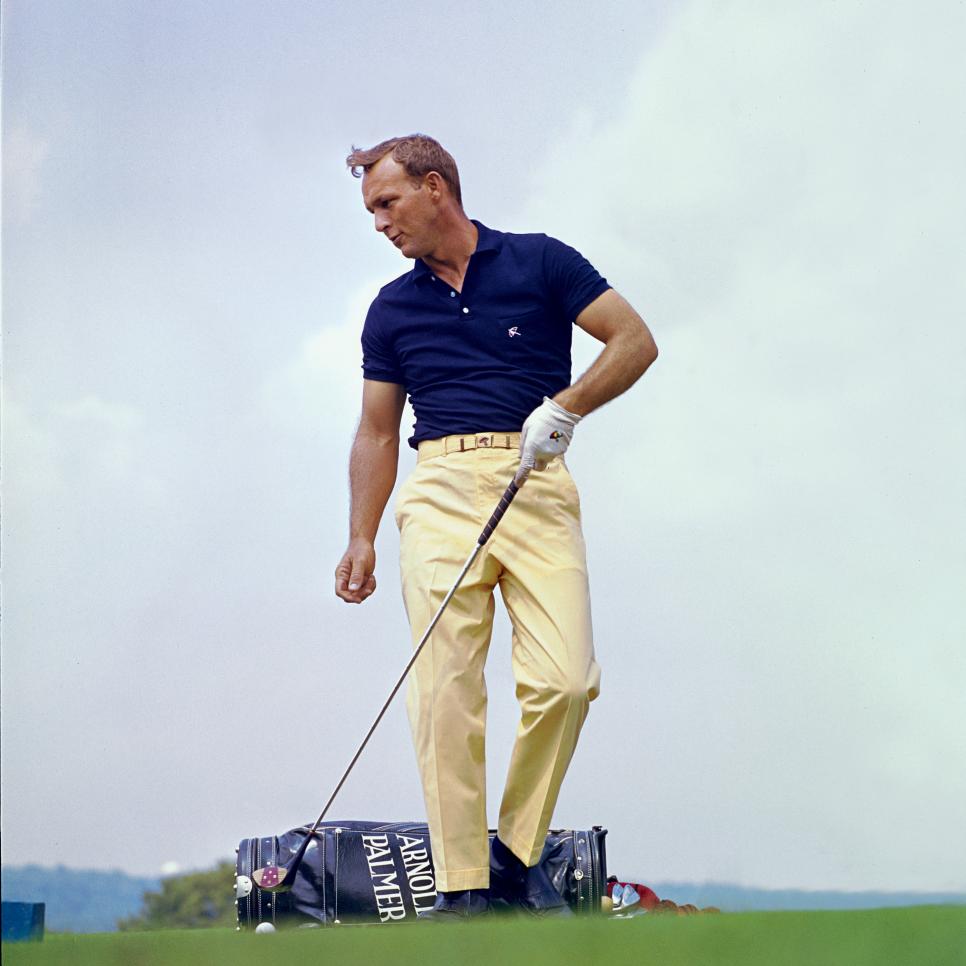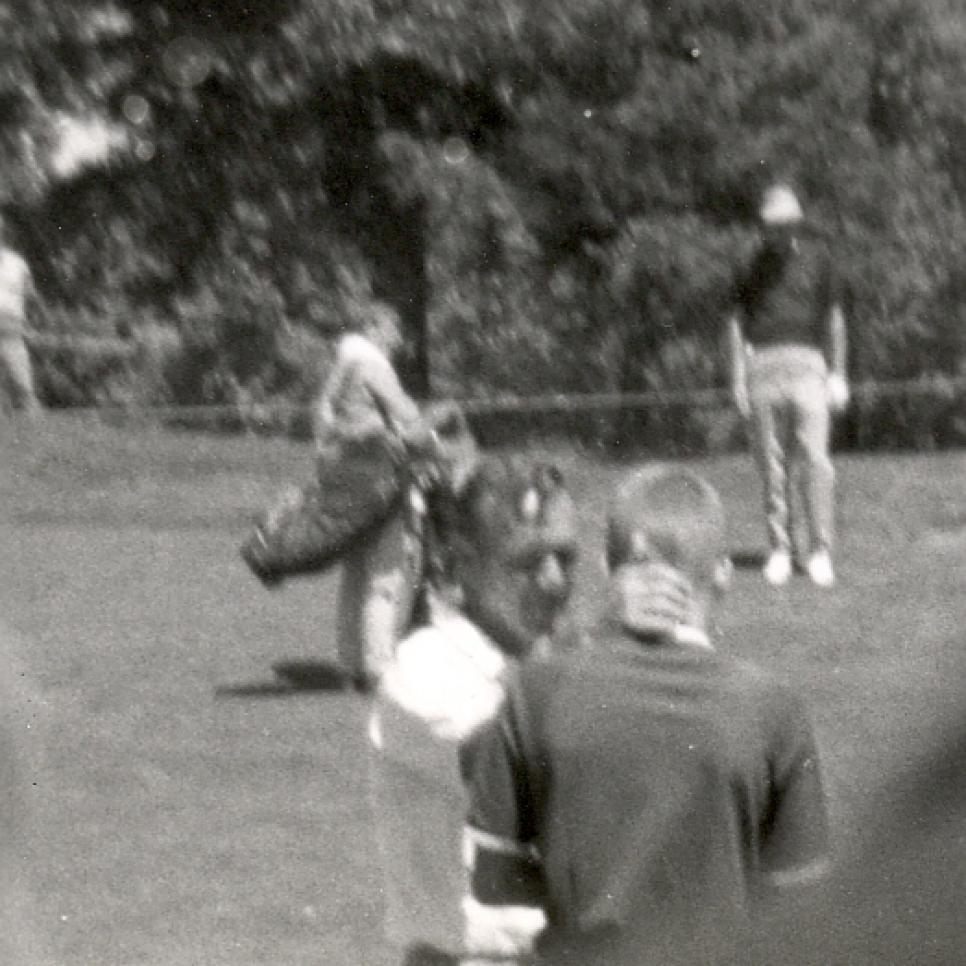The Loop
Remembering five rounds with Arnold Palmer

Golf Digest Resource Center
In 1966, Ron Schmid, the former Duke women’s golf coach and executive director of the Carolinas PGA Section, was a 15-year-old caddie in Ohio. The Cleveland Open was coming to Lakewood Country Club, and the best five or six caddies from the surrounding clubs submitted their names to caddie for the event. At that time, players didn’t have caddies who traveled with them. It was a random draw to see who’d be carrying their bag for the week.
“There were 200 caddies and probably 144 players," Schmid recalls. "They pulled the caddie’s name first, then the player’s name. They went through two-thirds of the field, and I remember thinking I might not get a bag. They called my name, and I was just happy to get a bag.
“Then they pulled out the name of the pro. It was Arnold Palmer. I was at such a loss. It was like being batboy for Babe Ruth. This was the same year he’d lost to Billy Casper in the U.S. Open at Olympic.”
Schmid carried for Palmer in the pro-am and then the four tournament rounds. There weren’t ball pickers for the ranges like there are now, so the caddies would go out into the range with their shag bags, and their players would hit to them.
“He’s trying to hit it right to me,” Schmid said. “Behind him, there are hundreds of people. It’s hard to see a ball when there are all these different colors behind it. You’re out there trying to look like you know what you’re doing, you’re wearing a batting helmet, and you know he’s gonna be dropping them right on top of you.”
Schmid made if off the range unscathed. Palmer autographed that helmet for him at the end of the tournament. On the course, he got a quick lesson in how precise Palmer wanted his yardages.
“He asked me the yardage on the first hole, I said something like, 'About 135.' He hits this shot and it goes a little past the pin, four or five yards. He starts pacing it off. He walks right to his ball and he says, 'It was 131. I’d like it more exact.' I remember after the round, I was all over that golf course making notes. The next day the first yardage he asked for, I gave it to him to the half yard.”
Throughout the rounds, two holes stick out in Schmid’s memory. A par 3, where the tee markers were moved back each day, to the point where the hole was about 15 yards longer on the last round than it was the first.
“He hit the same club every day,” Schmid said. “He had a way of just getting what he needed out of it.”
The other hole was a dogleg par 5, where Palmer hit a towering drive that cut the corner. “We’re walking up to it, knowing he had a chance to get there in two,” Schmid said. “We get to the ball, and it’s in the middle of a divot hole. I’m crushed. But he looks at me like this is no problem. And he carves this shot out of there, right up to the green, like it was nothing.”
As you’d expect, carrying for The King meant carrying in front of a big crowd. “He hit everything around the green with his 56 [degree wedge] and every shot spun back," Schmid said. "I think he liked that. And the crowd just reveled in it. He was just the guy.”
Schmid remembers Palmer winning $800 that week. $250 of it went to Schmid, which was a pretty good payday for a teenager in 1966.
Though the tournament rules said no cameras, Schmid's mom snuck in a little Kodak Instamatic camera. She was able to get a few photos of Schmid and Palmer during the round.
"The one that's the best, he's over on the right side of the fairway and I'm facing away from the crowd, and we're having a conversation. He's looking right at me, hand on my shoulder."


